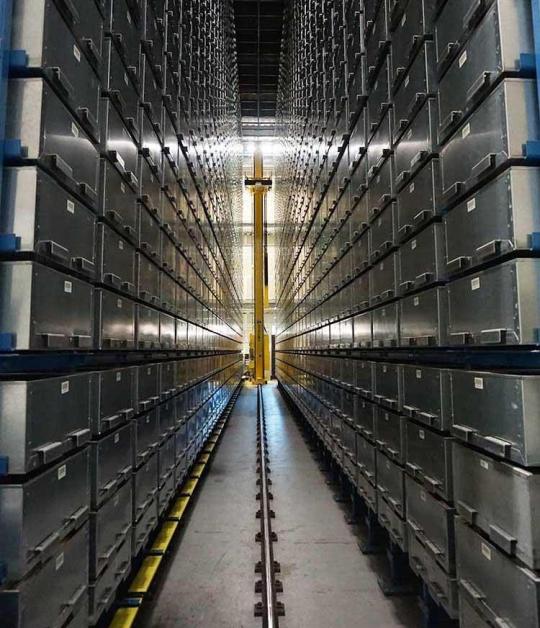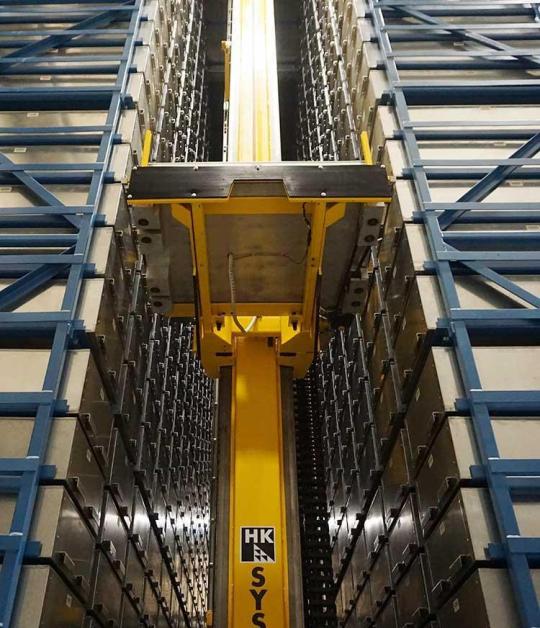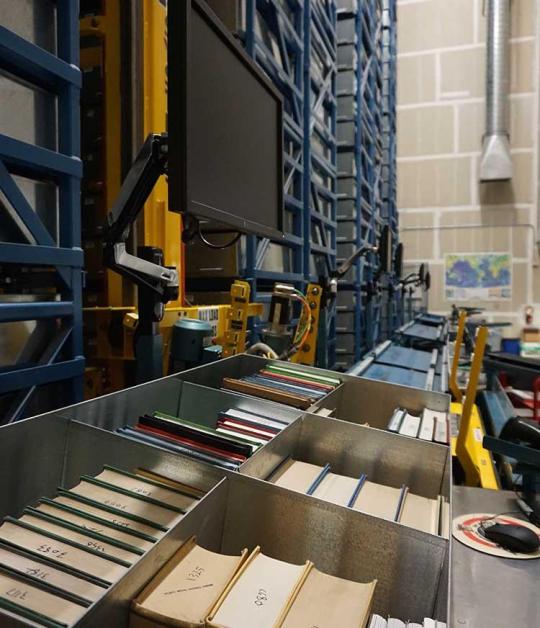Automated Retrieval System



One of the unique features of the Jean and Charles Schulz Information Center is the Automated Retrieval System. The retrieval system provides quick access to a three-story, computer-managed storage system with a capacity for 750,000 items located within the library building.
What is kept in the retrieval system?
The retrieval system is where we keep archived journals, theses, and less-used items. It allows us to keep less-used items in the building and accessible, while leaving room for more current and heavily used materials on the open shelves.
How are materials retrieved?
If the item you want is located in the Automated Retrieval System, you'll need to request it by clicking the Request button in the catalog record.
Once a request is made, an automatic crane locates the requested item and pulls it for retrieval by library staff. The item will then be brought to the requested pickup location or scanned for digital delivery.
The retrieval process takes about 15 minutes.
What are the advantages of an ARS?
- Maximum Flexibility: By incorporating the retrieval system into the building design, the library achieves the maximum capability to house, protect, and access library materials well into the future.
- Greater Holding Capability: Because storage in the ARS is more compact than open shelving, the library is able to retain less-used materials and create space in open shelving for more current and relevant items.
- Earthquake Safety: The retrieval system was designed to exceed earthquake building standards.
- Expansion: The retrieval system is designed with advanced technological capabilities that can be upgraded and expanded.
- Cost savings: The retrieval system eliminates the need and cost for offsite storage facilities.
Who makes the system and who else is using it?
The Automated Retrieval System at Sonoma State was manufactured by HK Systems of Salt Lake City, Utah.
Other libraries using this system include

